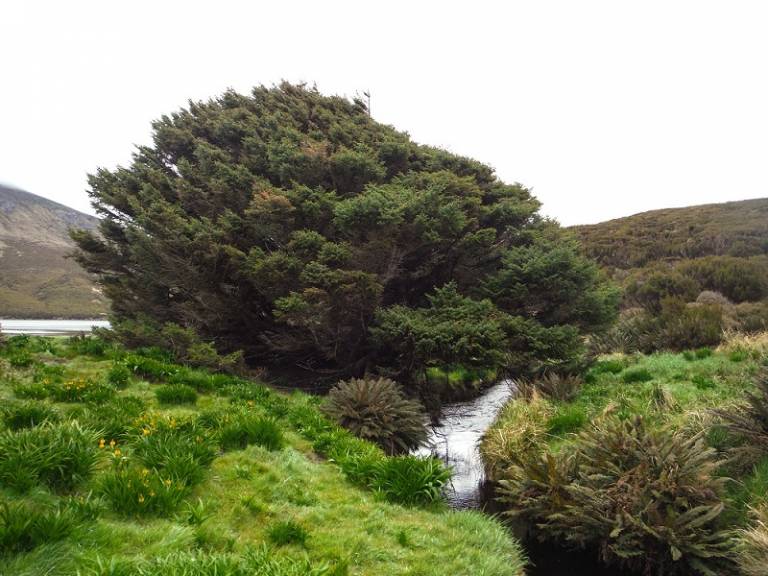Loneliest tree in the world marks new age for our planet
19 February 2018
The planet entered a new geological epoch known as the Anthropocene in 1965, according to a new study led by UCL and University of New South Wales.

The Anthropocene has become a term used by scientists all over the world, seeking to put a marker on when humans began to leave a significant impact on the planet. Until now there has been no definitive 'global' signal to enable scientists to officially declare a new epoch.
The study, published in Scientific Reports by members of the Australasian Antarctic Expedition 2013-2014, provides the first precise global signal for the Anthropocene from the Southern Hemisphere by using the accumulation of radiocarbon in tree wood from above ground nuclear bomb tests.
The researchers were able to mark the new epoch because the radiocarbon peak or 'golden spike' found in the heartwood of a strange and singular tree, a Sitka Spruce found on Campbell Island, a World Heritage site in the middle of the Southern Ocean. The spruce is locally referred to as 'the loneliest tree in the world' with the next closest tree over 200 km away on the Auckland Islands.
The golden spike was created by the culmination of mostly Northern Hemisphere atmospheric thermonuclear bomb tests in the 1950s and 1960s. The signal was fixed in the wood of the Campbell Island Sitka spruce by photosynthesis.
"We were incredibly excited to find this signal in the Southern Hemisphere on a remote island, because for the first time it gave us a well-defined global signature for a new geological epoch that could be preserved in the geological record," said lead author Professor Chris Turney (University of New South Wales).
"Thousands of years from now this golden spike should still stand as a detectable marker for the transformation of the Earth by humankind," added Professor Turney.
In the Northern Hemisphere, the atmospheric radiocarbon peak occurred in 1964 where the signal is preserved in European trees. That same peak took until late 1965 (October - December) to reach the Southern Hemisphere atmosphere. With that spruce, the signal became global, precise and detectable in the geological record, meaning it fitted the requirements as a marker for a new epoch.
The 100-year-old tree itself is an anomaly in the Southern Ocean. It is naturally found along the North American Pacific Coast but it is credited with being planted on Campbell Island by the Governor of New Zealand in 1901. The oceanic climate has had an unusual effect on the spruce. Although it has grown to 10m tall, the tree has never produced cones, suggesting it has remained in a permanently juvenile state.
"It seems somehow apt that this extraordinary tree, planted far from its normal habitat by humans has also become a marker for the changes we have made to the planet," said co-author Professor Mark Maslin (UCL Geography).
"It is yet further evidence, if that was needed, that in this new epoch no part of our planet remains untouched by humans," added Professor Maslin.
The research is supported by the Australasian Antarctic Expedition 2013-14, the Australian Research Council, the New Zealand Department of Conservation and the University New South Wales. Funding support was also provided by the Crown Research Institutes from the New Zealand Ministry of Business, Innovation and Employment's Science and Innovation Group.
Links
- The paper is available on Scientific Reports
- UCL Department of Geography
- Professor Mark Maslin's academic profile
- Media coverage
Image
- The loneliest tree. Credit: Pavla Fenwick
Natasha Downes
Tel: +44 (0)20 3108 3844
Email: n.downes [at] ucl.ac.uk
 Close
Close

